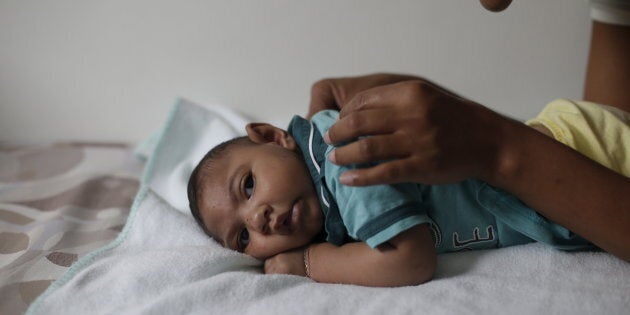

By Lisa Rapaport
(Reuters Health) - The mosquito-borne Zika virus can lead to extensive birth defects that go beyond microcephaly, a Brazilian study suggests.
Researchers studied 11 babies diagnosed with Zika and found they had a range of neurological impairments including small skulls and brains as well as an underdeveloped cerebellum, the part of the brain responsible for motor skills, and an absence of normal folds in the cerebral cortex, the gray matter that handles memory, language, social skills and problem solving.
“Microcephaly is not the only thing that happens with fetal Zika infection,” said senior study author Dr. Amilcar Tanuri, a researcher in the laboratory of molecular virology at the Federal University of Rio de Janeiro.
Instead, Zika should be considered a congenital viral disease like rubella or cytomegalovirus, Tanuri said by email.
“Some babies do not survive and the ones that survive carry several developmental or cognitive delays or deficits,” Tanuri added.
Zika has been reported in at least 59 countries and territories since it first appeared in the Americas last year in Brazil, according to the World Health Organization.
There are more than 25,000 cases of the mosquito-borne virus in the United States and its territories, including more than 2,300 involving pregnant women. Most of the cases are in Puerto Rico, but there is a limited active outbreak in Miami.
The virus has been linked to thousands of babies being born with microcephaly.
Ten of the 11 mothers included in the study in Paraiba, a state in northeastern Brazil, had symptoms of Zika infection during the first half of pregnancy, researchers reported October 3rd in JAMA Neurology.
The women all had confirmed Zika virus diagnoses during pregnancy and ultrasound exams that showed some fetal abnormality in brain development. Cases were referred between October 2015 and February 2016.
Zika virus was identified in amniotic fluid, placenta, cord blood and neonatal tissues collected postmortem because three of the 11 babies died within 48 hours of delivery and two mothers consented to autopsies. These deaths resulted in a perinatal mortality rate of about 27 percent.
The remaining infants were followed from gestation to 6 months old.
Researchers tested for other causes of microcephaly, such as genetic disorders and infections, and results were negative. The Zika virus genome was found in the tissues of both the mothers and their babies.
One limitation of the study is that most imaging was done during pregnancy, and more images after delivery would be needed to better assess brain damage in the children, the authors note.
Even so, the findings suggest that microcephaly is a result of several brain injuries related to the Zika virus, the researchers conclude. As a result, they propose describing cases as having “congenital Zika syndrome,” rather than just microcephaly, which is only one sign of the syndrome.
Nerve cells in the brain migrate in fixed ways early in life to form different critical regions of the brain, such as the cortex and the cerebellum, said Dr. Raymond Roos, a researcher at the University of Chicago Medical Center and author of an accompanying editorial.
“Zika virus infection of the fetus disturbs this migration, resulting in a number of developmental abnormalities of the brain, such as microcephaly,” Roos said by email.
Even if infants don’t appear to have microcephaly, they may still suffer lasting effects from Zika, Roos noted.
“Physicians should scrutinize babies who are born from mothers who have been infected with Zika virus during pregnancy in special ways, even if the babies have normal sized heads,” Roos said. “These babies should be carefully evaluated with respect to the timing of their milestones and intellectual development.”
SOURCE: http://bit.ly/2d9DwIn and http://bit.ly/2dmjuQ1
JAMA Neurol 2016.
